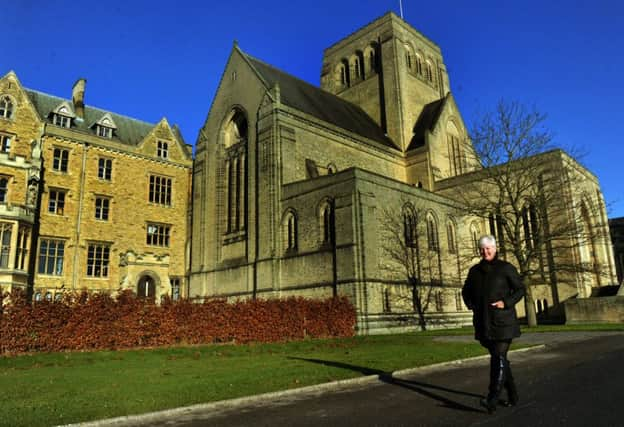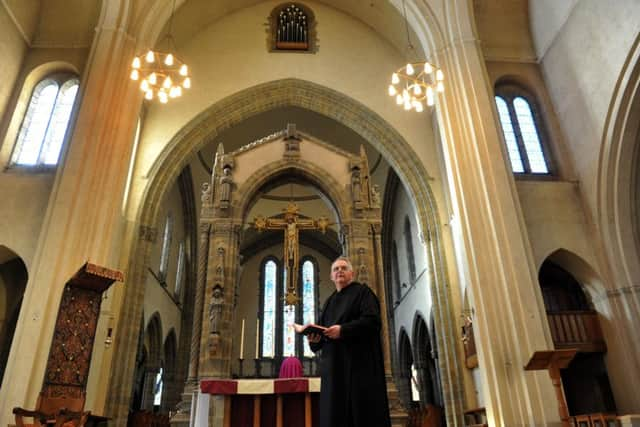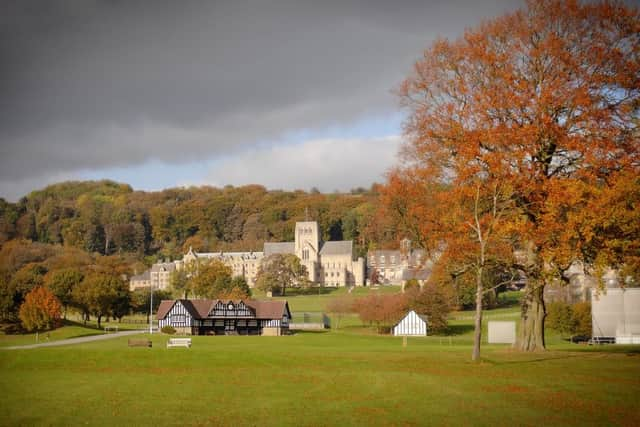As its monks win £3m from the lottery, Downton's creator says it all started at Ampleforth


Ampleforth Abbey, to the north of Malton where the Howardian Hills meet the North York Moors, is home to the country’s largest community of Benedictine monks.
Since the early 19th century, the private school established in its name has taken in boarders from far and wide, and in more recent times the monks have supplied cider and honey from their vast orchard.
Advertisement
Hide AdAdvertisement
Hide AdBut the 2,000-acre estate remained hidden from many in the wider community until the opening of a visitor centre and tea room, five years ago.


Since then, around 12,000 people a year have toured the monastery and grounds. The new round of funding, announced today, is expected to increase that nearly four-fold.
The £2.9m award from the Heritage Lottery Fund was welcomed by an Ampleforth old boy who went on to create an abbey almost everyone has seen.
Lord Julian Fellowes, the writer who penned Downton Abbey for television, said it was Ampleforth that had inspired his love of the theatre.
Advertisement
Hide AdAdvertisement
Hide Ad“I am delighted to hear that Ampleforth is to receive help from the Heritage Lottery Fund,” Lord Fellowes said. “I hope that the Abbey with its long tradition, its wide range of facilities and its wonderful location will continue to be a source of inspiration to many others.”


Sir Peter Luff, chair of the Heritage Lottery Fund, called Ampleforth “a place of inspiration and beauty”.
He said: “It has entranced past generations and will continue to do so in the future.
“We’re investing £3m to help the Abbey to be the vibrant and welcoming place the monks rightly wish.
Advertisement
Hide AdAdvertisement
Hide Ad“Visitors will see more clearly than ever the wonderful heritage of buildings, of nature and of faith as they marvel at the abbey’s breathtaking architecture, enjoy the surrounding landscape and learn how its Benedictine monastic community works in the 21st century.”


Ampleforth was established in 1802, with the return to England of the community of monks dispersed to France 200 years earlier, following the sacking of the monasteries by Henry VIII. The success of the college they established led to a programme of expansion, including, in the 1920s, a new church designed by Sir Giles Gilbert Scott, who also created Battersea Power Station and Britain’s signature red telephone boxes.
Among the features of his idiosyncratic design was a network of drainpipes running inside the building, so they did not spoil its appearance. The church was given Grade I listed status earlier this year.
Upon his death in 1960, the Ampleforth monks buried Scott in the grounds of Liverpool’s Anglican cathedral, which he also designed.
Advertisement
Hide AdAdvertisement
Hide AdThe abbey will use the lottery cash to increase the size of the visitor centre and car parks.


Awaiting the new influx tourists will be tours of the 2,000-tree orchard, the biggest in the north, which grows more than 40 varieties of apples, some of which are used to make Ampleforth Abbey cider and apple liqueur.
The abbey’s 59 monks, augmented by a staff of lay workers, also sell their own beer, brewed in partnership with a firm in Hebden Bridge, which is based on a 17th century Belgian Trappist recipe.